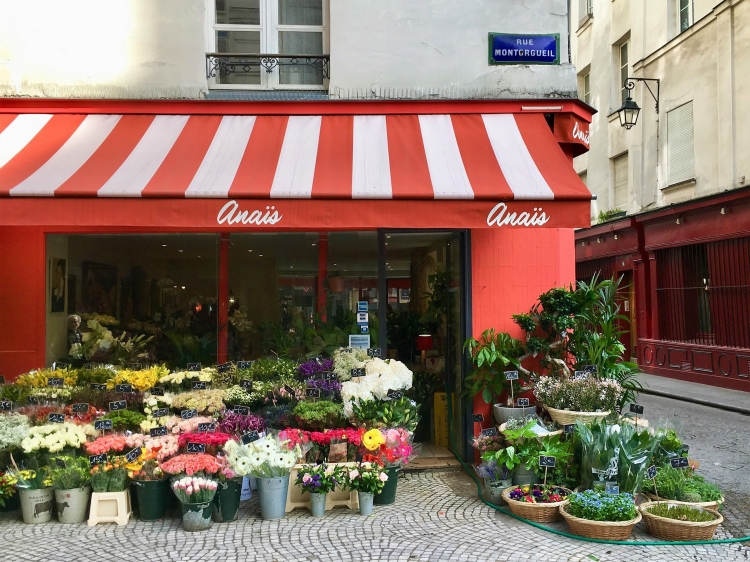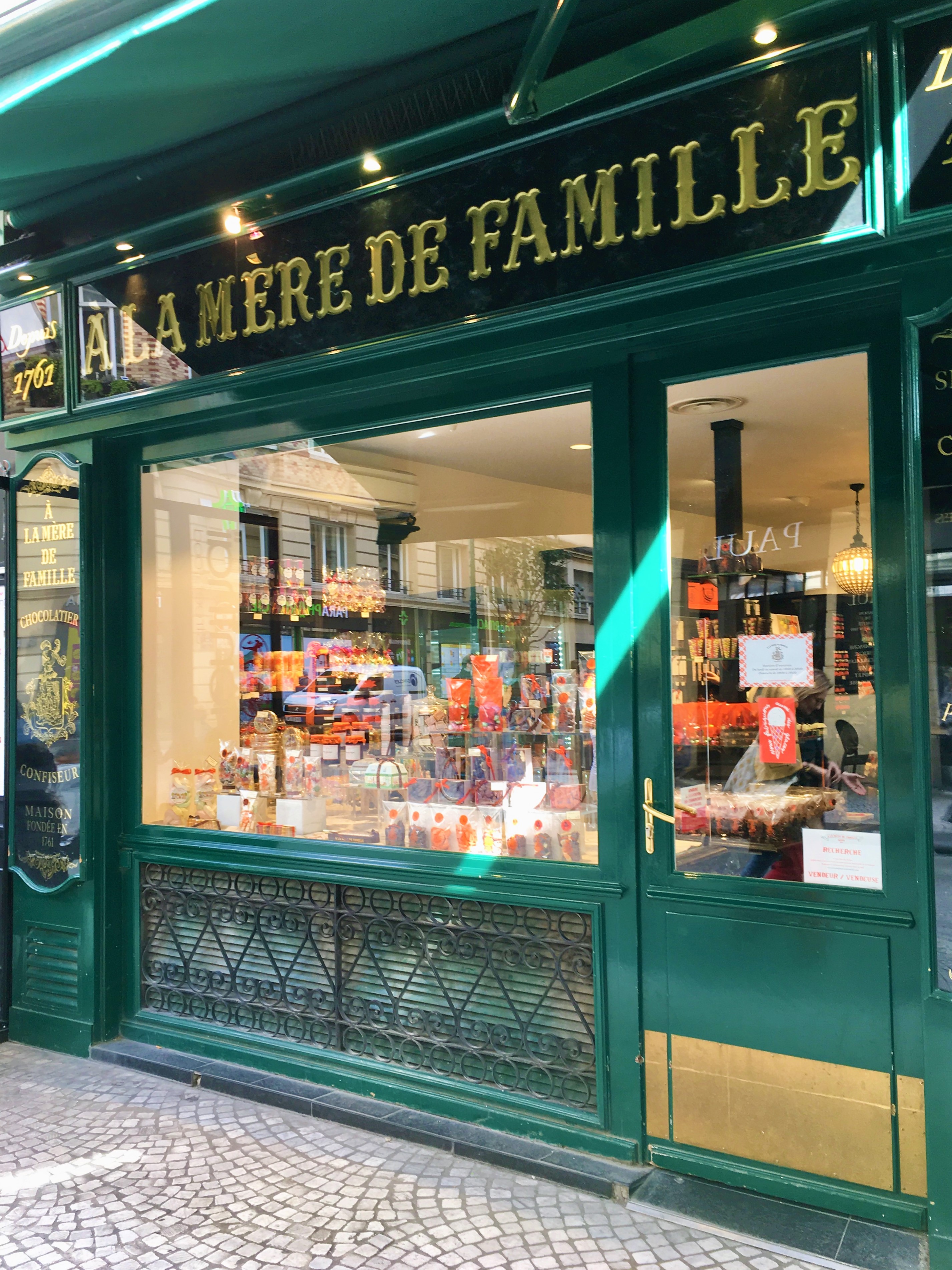A Stroll Down Rue Montorgueil

Located in the heart of the city's 2nd arrondissement, rue Montorgueil is the last trace of what was once Paris’s great wholesale marketplace 'Les Halles.' Nicknamed 'the Belly of Paris' (le Ventre de Paris), it once was the central selling-point of the city's produce.
In the 1970s, merchants were forced out and dispatched to Rungis-- a large industrial complex on the outskirts of Paris-- to make way for the large shopping mall also called Les Halles, which was mounted where the markets used to stand. Rue Montorgueil, however, escaped the demolition and is now Paris’s favorite 'market street.'
From as early as 7am, tourists and locals alike swarm the street for the family-owned boulangeries, pâtisseries, fromageries, poissonnières, charcuteries, boucheries, chocolatiers, flower shops, and gourmet food shops, many of which trace their roots back to the early 19th century. On the street, vehicles are banned so that the entire area may be devoted to shoppers. The marketplace is just about a three-block radius so that you can engorge yourself variously without trekking all over Paris.
Start your stroll of the Montorgueil marketplace by starting next to L’Eglise Saint-Eustache from the metro stop Étienne Marcel. Before crossing, notice the restaurant called L’Escargot Montorgueil by the shiny snail perched on top of the entrance. The iconic image and institution dates back to 1832 and was frequented by many artists, including Marcel Proust, Sacha Guitry, and Charlie Chaplin. While it's no longer as gastronomic as it was in the 1900s, it still has a certain appeal, especially for those that are curious to try snails.
Another important restaurant you are sure to notice is Au Rocher de Cancale by its magnificent colonial-era façade and a collection of oyster statues on the side. It's named after Cancale, a coastal town in Brittany, famous for its oyster beds, and has been serving oysters since 1804. Back in the day, horses were used to quickly deliver oysters from Brittany to the Paris markets to ensure freshness. In 1997, the restaurant was classed as a historic monument. Inside, you can admire the works of French artist Paul Gavarni, which were discovered underneath a layer of plaster on the walls of the first floor during a refurbishment. French writers Honoré de Balzac and Alexandre Dumas, who obsessed over food in their writings, were frequent visitors to Au Rocher de Cancale.
 Inside the famous Pâtisserie Stohrer, 51 rue Montorgueil. Image Credit: Caroline Richstein
Inside the famous Pâtisserie Stohrer, 51 rue Montorgueil. Image Credit: Caroline Richstein
A third historic institution of the marketplace is Pâtisserie Stohrer, which has been making pastries since 1730 (making it the oldest pâtisserie in Paris)! It was founded by Nicolas Stohrer, the Polish baker for Marie Leszczynska who was the daughter of King Stanislas of Poland and who married into the French court via Louis XV. He was brought along by the new queen so that she could continue to enjoy his pastries. Today, we can enjoy them too. Stohrer offers his original creation “baba au rhum” and another pastry “réligieuse à l’ancienne,” a mountain of cream puffs that looks like a nun. At Christmastime, be sure to try their Zimtsterne, German cinnamon cookies shaped like stars (my favorite cookie).
 A la Mère de Famille, 82 rue Montorgueil. Image Credit: Caroline Richstein
A la Mère de Famille, 82 rue Montorgueil. Image Credit: Caroline Richstein
If looking for more sweets, check out A la Mère de Famille for chocolates and other treats. While it is the oldest confectionary shop in Paris (c. 1761), the original one is on rue du Faubourg Montmartre. The one here is just as well-stocked with French candies such as Bergamots de Nancy, pâtes de fruit, candied fruits from Provence, and calissons d’Aix. And, of course, many chocolates.
In Paris, you cannot forget the baguette! Founded in 1960, Maison Collet has the freshest, crispiest baked bread. Beware, as there is often a queue out the door. Make sure to leave with your baguette the Parisian way, which means twisting off the knob at the end of the loaf (“le quignon” in French) and eating it.
 A selection of cheeses at La Fermette, 86 rue Montorgueil. Image Credit: Caroline Richstein
A selection of cheeses at La Fermette, 86 rue Montorgueil. Image Credit: Caroline Richstein
When in France, you cannot forget the cheese. So, make sure to swing by La Fermette for every kind of cheese you can imagine. My favorites are the 30-month-old Comté, and of course any Gruyere.
Fortunately, in the last six years people have protested the building of a McDonalds on rue Montorgueil. The city has denied the building permit for it twice, as it would surely endanger the recognized charm of the historic street. So, after a long few hours of hauling cheese, bread, and cake-- and generally indulging in gluttony-- take a break at one of the sidewalk cafes where you can continue to snack and people-watch and see how rue Montorgueil has maintained its reputation as a thriving Parisian marketplace where old-school artisans provide snapshots of the old days, as well as a smorgasbord of goodies today. Bon appétit!

